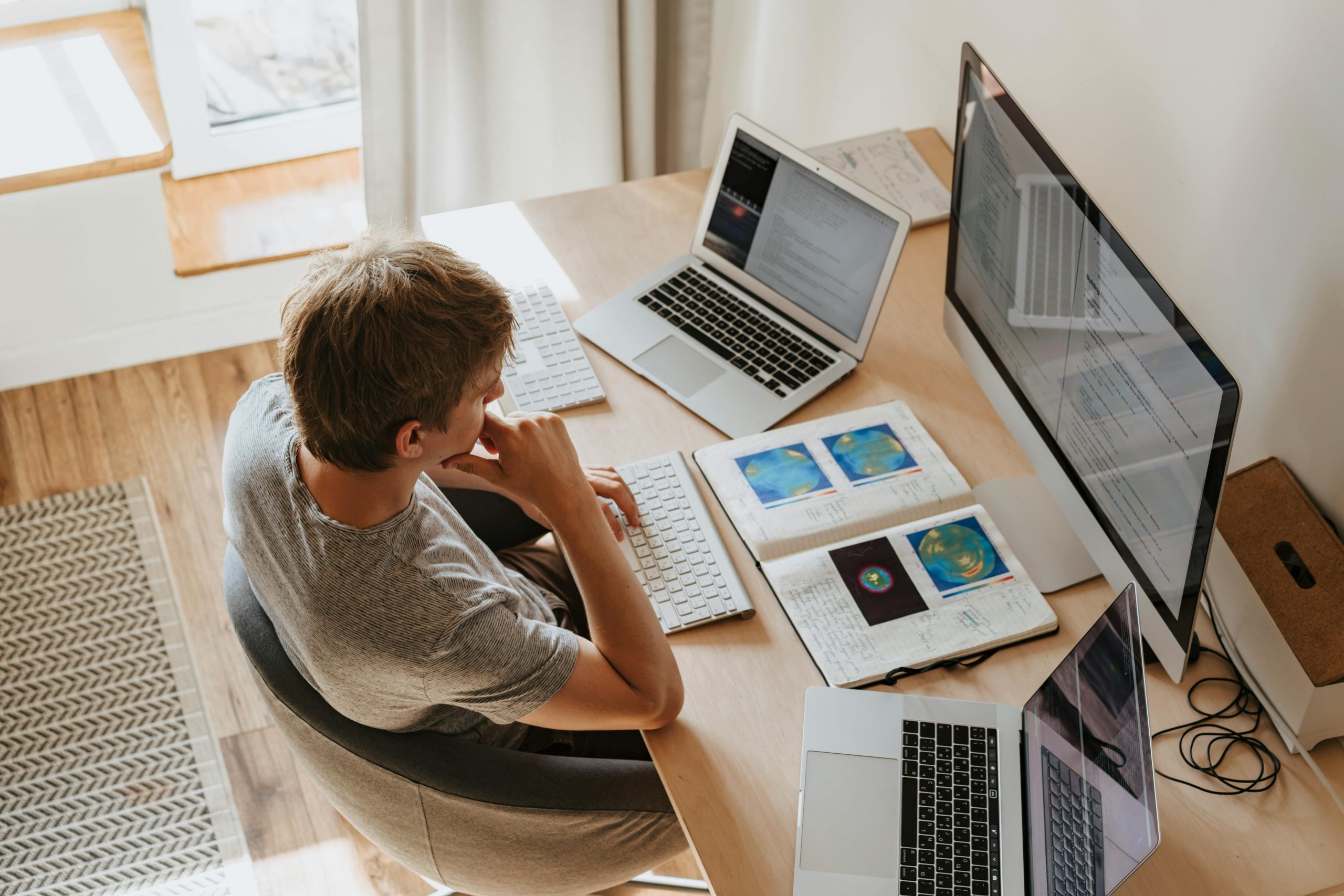
A slow computer can be one of the most frustrating problems in the digital age. Whether you’re working, gaming, or just browsing the web, sluggish performance can derail productivity and test your patience. Fortunately, improving your computer’s speed doesn’t always require expensive upgrades or technical expertise.
In this guide, we’ll walk you through practical, effective ways to make your computer faster—from simple software tweaks to hardware upgrades that make a big difference. Each section includes easy-to-follow steps, so you can start improving your PC’s performance right away.
1. Restart Your Computer Regularly

It might sound basic, but restarting your computer clears temporary files, refreshes system memory, and resolves minor background errors that can slow down performance.
Why restarting helps:
- Clears the system cache and RAM
- Stops background programs that may be hogging resources
- Allows pending updates to install properly
Tips:
- Restart your computer at least once a week.
- If your PC feels slow after long use, a quick reboot often speeds it up instantly.
2. Manage Startup Programs
When you turn on your computer, many programs launch automatically in the background. This can significantly slow your startup time.
How to manage startup apps (Windows):
- Press Ctrl + Shift + Esc to open Task Manager.
- Go to the Startup tab.
- Right-click any unnecessary program and select Disable.
For macOS users:
- Go to System Settings > Users & Groups.
- Click your profile, then Login Items.
- Remove or hide unneeded apps.
Best practice: Keep only essential programs like antivirus software or cloud backups set to launch at startup.
3. Free Up Disk Space
A cluttered hard drive slows down your computer by making it harder for the operating system to find and load files.
Steps to clean up your disk:
- Use Disk Cleanup (Windows):
- Type “Disk Cleanup” in the search bar.
- Select the drive you want to clean.
- Delete temporary files, old system files, and empty the Recycle Bin.
- For macOS:
- Go to About This Mac > Storage > Manage.
- Review recommendations like “Empty Trash Automatically” and “Reduce Clutter.”
Other tips:
- Uninstall unused software.
- Delete duplicate photos and large media files.
- Move personal files to cloud storage or an external drive.
4. Uninstall Unnecessary Programs
Many computers come preloaded with unwanted software—often called “bloatware.” Over time, this can drain system resources.
How to remove unused apps:
- Windows:
- Go to Settings > Apps > Installed Apps.
- Uninstall programs you no longer need.
- Mac:
- Open Applications folder.
- Drag unused apps to the Trash.
Tip: Be cautious not to uninstall system-critical programs. When in doubt, research the app before deleting it.
5. Update Your Operating System and Software

Outdated systems and software can slow your computer and expose it to security risks. Updates often include bug fixes and performance improvements.
How to update:
- Windows:
- Go to Settings > Windows Update > Check for updates.
- Mac:
- Go to System Settings > General > Software Update.
Pro Tip: Enable automatic updates to ensure your system always runs efficiently and securely.
6. Check for Malware and Viruses
Malware is one of the most common reasons for a slow computer. It consumes memory, causes crashes, and runs unwanted background processes.
How to check for malware:
- Install trusted antivirus software (like Bitdefender, Norton, or Windows Defender).
- Run a full system scan weekly.
- Avoid downloading files from suspicious websites or email links.
Signs your computer might be infected:
- Unexpected pop-ups
- Programs opening or closing automatically
- Overheating or noisy fans
Pro Tip: Combine antivirus protection with anti-malware tools like Malwarebytes for stronger defense.
7. Optimize Hard Drive Performance
If you use a traditional hard disk drive (HDD), regular defragmentation can improve performance. For solid-state drives (SSD), optimization works differently.
For HDD users:
- Use the built-in Defragment and Optimize Drives tool in Windows.
- Search for “Defragment” in the Start menu.
- Select your drive and click Optimize.
For SSD users:
- Defragmentation isn’t necessary. Instead, ensure TRIM is enabled (Windows does this automatically).
Tip: Run optimization monthly to keep your drives performing smoothly.
8. Adjust Visual Effects for Better Speed
Fancy animations and visual effects can make your computer look nice but slow it down—especially on older machines.
How to reduce effects on Windows:
- Press Windows + R, type sysdm.cpl, and hit Enter.
- Under Advanced > Performance, click Settings.
- Choose Adjust for best performance or customize manually.
For Mac:
- Go to System Settings > Accessibility > Display, then reduce motion or transparency.
Reducing unnecessary effects frees up resources for actual performance tasks.
9. Upgrade Your Hardware
If software tweaks don’t solve the problem, a few hardware upgrades can drastically improve your computer’s speed.
Best upgrades to consider:
- Add more RAM: More memory allows your computer to multitask efficiently. Aim for at least 8GB for general use, or 16GB+ for gaming or editing.
- Switch to an SSD: Replacing your hard drive with a solid-state drive offers a dramatic boost in boot time and file access speed.
- Upgrade your CPU or GPU: For power users or gamers, these upgrades can greatly enhance performance.
Note: Hardware upgrades may void warranties on some devices—always check before making changes.
10. Manage Background Processes
Many apps and services run silently in the background, consuming memory and slowing down your system.
How to identify resource hogs (Windows):
- Open Task Manager (Ctrl + Shift + Esc).
- Check the Processes tab.
- Sort by CPU, Memory, or Disk to identify high-usage programs.
- Right-click and select End Task for unnecessary ones.
For Mac:
- Open Activity Monitor from Applications > Utilities.
- Quit or force quit high-usage processes.
Tip: Be careful not to end essential system processes—stick to apps you recognize.
11. Clean Your Computer Physically
Dust buildup can cause overheating, which slows performance and shortens your computer’s lifespan.
How to clean safely:
- Turn off and unplug your computer.
- Use compressed air to blow dust from vents and fans.
- Clean your keyboard and screen with microfiber cloths.
Benefits of cleaning:
- Reduces fan noise
- Prevents thermal throttling (when the CPU slows to avoid overheating)
- Extends hardware life
Regular cleaning keeps both desktop and laptop computers performing efficiently.
12. Disable Browser Extensions and Clear Cache
Your web browser can also contribute to a slow computer. Too many extensions or cached data can affect performance.
Steps to improve browser speed:
- Disable unnecessary extensions:
- In Chrome, go to More Tools > Extensions and remove unused ones.
- Clear browsing data:
- Delete cache, cookies, and history every few weeks.
Pro Tip: If your browser still lags, try switching to a lightweight option like Microsoft Edge or Brave.
13. Check for System Errors
Corrupted files or disk errors can cause lag or crashes. Running built-in diagnostic tools can identify and fix them.
For Windows:
- Use Check Disk (chkdsk) by typing it into Command Prompt.
- Run System File Checker (sfc /scannow) to repair damaged files.
For Mac:
- Use Disk Utility > First Aid to verify and repair disk issues.
Running these tools occasionally helps maintain system stability and speed.
14. Disable Background Apps and Notifications
Some background apps, like chat programs or cloud sync services, constantly use system resources.
How to disable them (Windows):
- Go to Settings > Apps > Apps & features.
- Select the app and turn off background activity.
For Mac:
- Go to System Settings > Notifications, then disable unneeded alerts.
Fewer background apps mean more processing power for the tasks that matter most.
15. Use Performance Mode or Power Settings
Your system’s power plan affects performance. If it’s set to “Power Saver,” your computer runs slower to conserve energy.
To adjust settings (Windows):
- Go to Settings > System > Power & Battery.
- Choose Best Performance mode.
For Mac laptops:
- Go to System Settings > Battery, and select performance over battery life when plugged in.
Optimizing power settings can significantly speed up processing and responsiveness.
16. Reinstall Your Operating System (Last Resort)
If your computer is still slow after trying everything else, reinstalling the operating system can give it a fresh start.
Before reinstalling:
- Back up important files.
- Create a bootable USB drive.
- Reinstall only essential apps afterward.
A clean installation eliminates years of clutter and corrupted files that drag down performance.
Final Thoughts
Speeding up your computer doesn’t always require professional help or expensive upgrades. With the right mix of maintenance, smart habits, and a few strategic tweaks, you can dramatically boost performance and extend your device’s lifespan.
From freeing up disk space to upgrading hardware, each step in this guide empowers you to take control of your computer’s speed and reliability.
Remember, consistent care is key—just like any machine, your computer performs best when it’s cleaned, updated, and optimized regularly.
By applying these tips consistently, you’ll enjoy a smoother, faster, and more dependable computing experience for years to come.